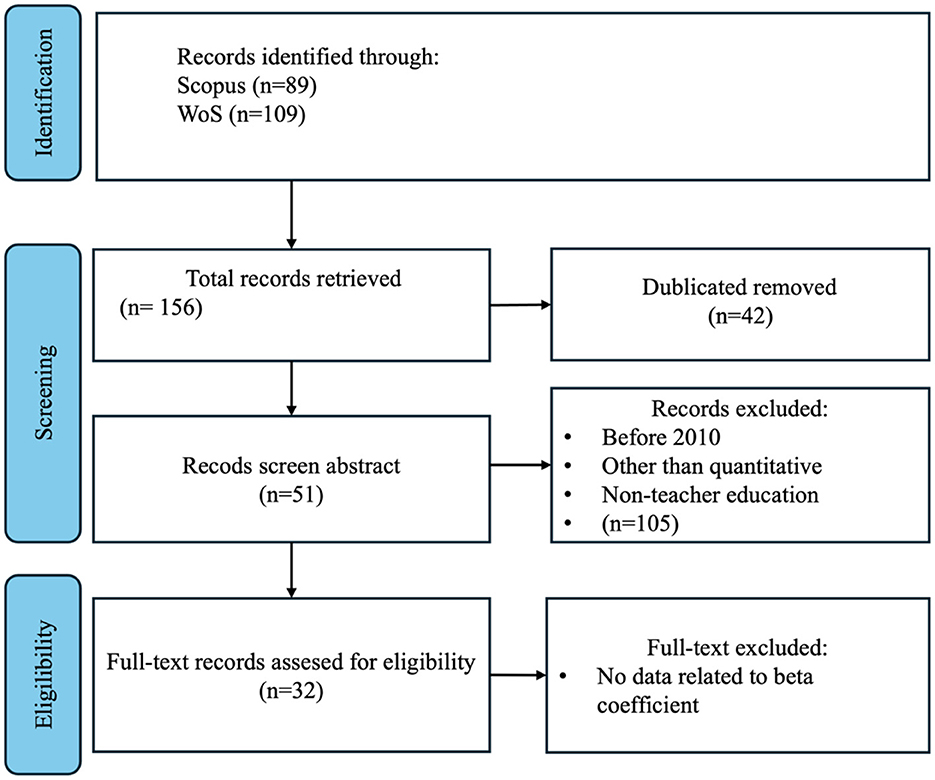Report on AI in Inclusive Education and its Alignment with Sustainable Development Goals
Research Overview
- Article: Original Research, part of the Research Topic “AI Innovations in Education: Adaptive Learning and Beyond”
- Authors: Amouri, H., Haroud, M., Ouchaouka, M., & Saqri, J.
- Affiliation: University of Hassan II Casablanca & Ecole Normale Supérieure Casablanca, Morocco
- Primary Focus: The study investigates the acceptability of Artificial Intelligence (AI) within inclusive education by analyzing the perceptions of future teachers through the Technology Acceptance Model 2 (TAM2) framework.
Core Contribution to Sustainable Development Goal 4 (Quality Education)
This research directly addresses the targets of SDG 4 by exploring the integration of advanced technology to ensure inclusive and equitable quality education and promote lifelong learning opportunities for all. The study’s focus on the human factors in AI adoption is critical for translating technological potential into tangible educational improvements.
- Enhancing Educational Quality: By assessing AI-driven educational tools, the study contributes to innovative methods for improving learning outcomes and personalizing education, a central tenet of SDG 4.
- Promoting Inclusive Education: The specific emphasis on “inclusive education” aligns with SDG 4’s mandate to eliminate disparities and provide equal access for all learners, ensuring that technological advancements benefit students with diverse needs.
- Supporting Teacher Development: Understanding the perceptions and acceptance of AI among future teachers is critical for its effective implementation in classrooms. This directly supports SDG Target 4.c, which aims to substantially increase the supply of qualified teachers through training and professional development.
Broader Impact on Associated SDGs
The study’s implications extend beyond a singular focus on education, contributing to a multi-faceted approach to sustainable development by impacting several interconnected goals.
- SDG 10 (Reduced Inequalities): The application of AI in education offers a powerful tool to reduce inequalities. By providing tailored support and personalized learning paths, AI can help bridge achievement gaps for students from disadvantaged backgrounds and those with varying learning abilities, ensuring no one is left behind.
- SDG 9 (Industry, Innovation, and Infrastructure): This research represents an advancement in educational technology, contributing to innovation (Target 9.5) and the development of resilient, sustainable, and inclusive infrastructure within the education sector.
- SDG 16 (Peace, Justice, and Strong Institutions): By fostering inclusive and equitable education systems, the research supports the foundation of effective, accountable, and inclusive institutions. Quality education is a cornerstone for building peaceful and just societies.
- SDG 17 (Partnerships for the Goals): The collaborative nature of the research and its publication as an open-access article exemplify a commitment to knowledge-sharing and global partnerships for sustainable development, facilitating the transfer of technology and innovative solutions.
Methodological Framework and Implications for SDG Implementation
The investigation provides a structured analysis of the human factors influencing technology adoption, which is crucial for the successful deployment of technologies aimed at achieving the SDGs. The focus on teacher acceptance ensures that implementation strategies are human-centered and effective.
- Research Process: The study involves conceptualization, data curation, formal analysis, and investigation.
- Key Components: The methodology relies on software, resource allocation, and project administration to generate its findings.
- Societal Impact: The findings are directly relevant to the societal impact and adoption of AI in human-centered contexts, a key consideration for implementing SDG-related policies successfully and ethically.
Publication and Dissemination Details
- Journal: Frontiers in Artificial Intelligence
- Section: AI for Human Learning and Behavior Change
- Status: Provisionally Accepted for publication in 2025.
- Distribution: Published as an open-access article under the Creative Commons Attribution License (CC BY), promoting the widespread and equitable dissemination of knowledge in direct support of the principles outlined in the Sustainable Development Goals.
SDGs Addressed in the Article
- SDG 4: Quality Education: The article’s central theme is “AI in inclusive education,” which directly relates to ensuring inclusive and equitable quality education for all. It also touches upon “teacher training” and preparing “future teachers,” which are crucial for delivering quality education.
- SDG 9: Industry, Innovation, and Infrastructure: The article discusses “AI innovations in education,” “AI-driven educational tools,” and “educational technology.” This aligns with the goal of fostering innovation and upgrading technological capabilities, particularly through scientific research in the field of artificial intelligence.
- SDG 10: Reduced Inequalities: By focusing on “inclusive education,” the article implicitly addresses the goal of reducing inequalities. AI-driven tools can provide personalized learning and support for students with diverse needs, including those with disabilities, thereby promoting their inclusion in mainstream education.
- SDG 17: Partnerships for the Goals: The research is a collaborative effort between two academic institutions in Morocco (University of Hassan II Casablanca and Ecole Normale Supérieure Casablanca). This represents a domestic partnership to advance scientific research and knowledge in a critical area, reflecting the spirit of collaboration for sustainable development.
Specific SDG Targets Identified
-
SDG 4: Quality Education
- Target 4.5: “By 2030, eliminate gender disparities in education and ensure equal access to all levels of education and vocational training for the vulnerable, including persons with disabilities, indigenous peoples and children in vulnerable situations.” The article’s focus on “inclusive education” directly supports this target by exploring technological tools designed to ensure all learners can participate and succeed.
- Target 4.a: “Build and upgrade education facilities that are child, disability and gender sensitive and provide safe, non-violent, inclusive and effective learning environments for all.” The implementation of “AI-driven educational tools” as discussed in the article is a method of upgrading learning environments to be more inclusive and effective.
- Target 4.c: “By 2030, substantially increase the supply of qualified teachers, including through international cooperation for teacher training in developing countries…” The research on “future teachers’ perceptions” and “teacher training” is essential for ensuring educators are qualified to use modern technologies like AI, thereby enhancing the quality of the teaching workforce.
-
SDG 9: Industry, Innovation, and Infrastructure
- Target 9.5: “Enhance scientific research, upgrade the technological capabilities of industrial sectors in all countries, in particular developing countries…” The article itself, being an “ORIGINAL RESEARCH article” on “AI Innovations in Education” from authors based in Morocco, is a direct contribution to scientific research and technological advancement in a developing country.
-
SDG 10: Reduced Inequalities
- Target 10.2: “By 2030, empower and promote the social, economic and political inclusion of all, irrespective of age, sex, disability, race, ethnicity, origin, religion or economic or other status.” The study’s exploration of AI for “inclusive education” is a direct effort to find tools that can help overcome barriers to learning and promote the social inclusion of all students within the educational system.
Implied Indicators for Measuring Progress
-
Related to Target 4.5 (Equal Access in Education)
- Implied Indicator: The rate of adoption and effective use of AI-driven tools in educational settings to support learners with diverse needs. The article’s study of “acceptability of AI” is a precursor to measuring this, as teacher acceptance is a critical factor for successful adoption.
-
Related to Target 4.c (Qualified Teachers)
- Implied Indicator: The preparedness level of pre-service and in-service teachers to integrate AI-based technologies into their teaching practices. The research on “future teachers’ perceptions” is a direct attempt to gauge this preparedness.
-
Related to Target 9.5 (Scientific Research)
- Implied Indicator: The number of scientific research publications on AI and educational technology originating from developing countries. The article itself serves as a data point for this indicator.
Summary Table of SDGs, Targets, and Indicators
| SDGs | Targets | Indicators Identified or Implied in the Article |
|---|---|---|
| SDG 4: Quality Education | Target 4.5: Ensure equal access to all levels of education for the vulnerable. | Implied: Rate of adoption of AI-driven tools for inclusive education. |
| SDG 4: Quality Education | Target 4.a: Build and upgrade inclusive and effective learning environments. | Implied: The extent of integration of “AI-driven educational tools” into school infrastructure. |
| SDG 4: Quality Education | Target 4.c: Substantially increase the supply of qualified teachers. | Implied: Preparedness level and “acceptability” among future teachers to use AI technologies. |
| SDG 9: Industry, Innovation, and Infrastructure | Target 9.5: Enhance scientific research and upgrade technological capabilities. | Implied: Number of research publications on “AI Innovations in Education” from developing countries. |
| SDG 10: Reduced Inequalities | Target 10.2: Empower and promote the social inclusion of all. | Implied: The use of AI in “inclusive education” as a tool to promote the inclusion of students with diverse needs. |
| SDG 17: Partnerships for the Goals | Target 17.6: Enhance cooperation on and access to science, technology and innovation. | Identified: The existence of research collaborations between academic institutions (University of Hassan II and Ecole Normale Supérieure). |
Source: frontiersin.org







